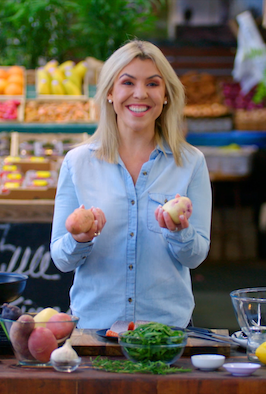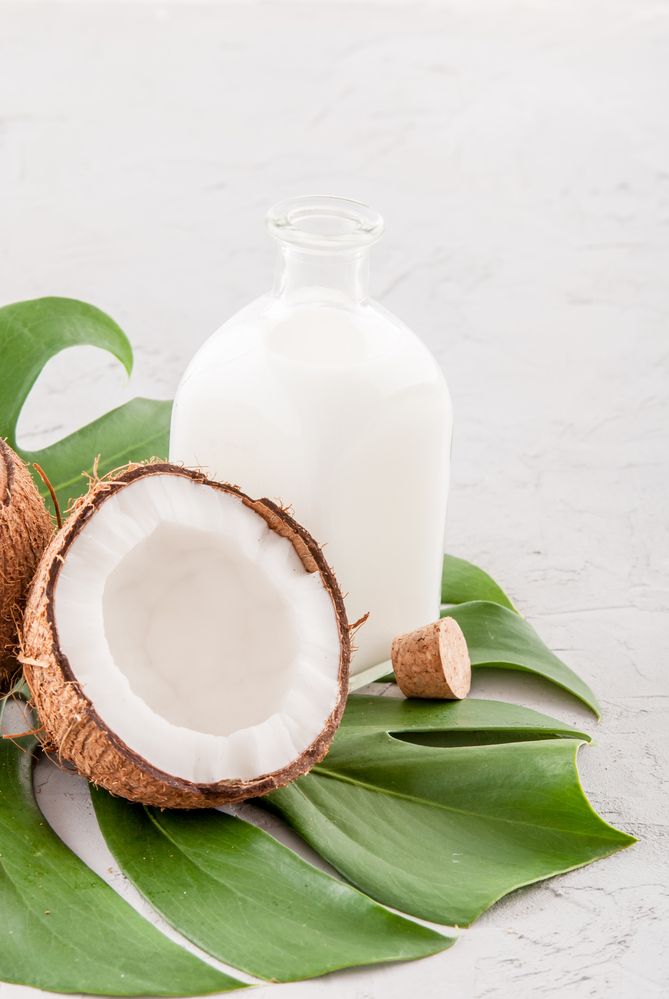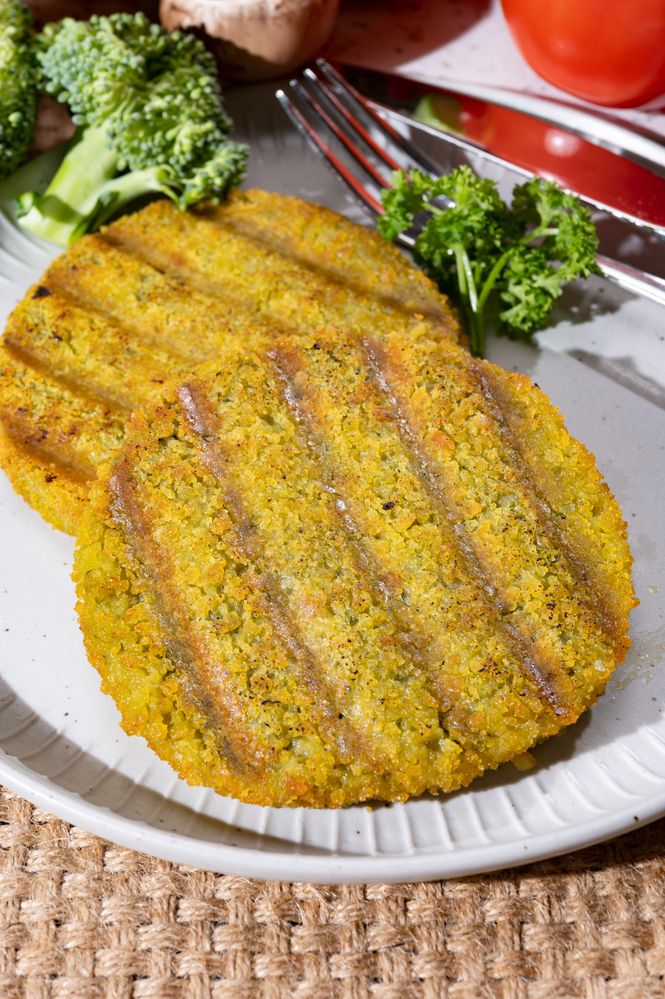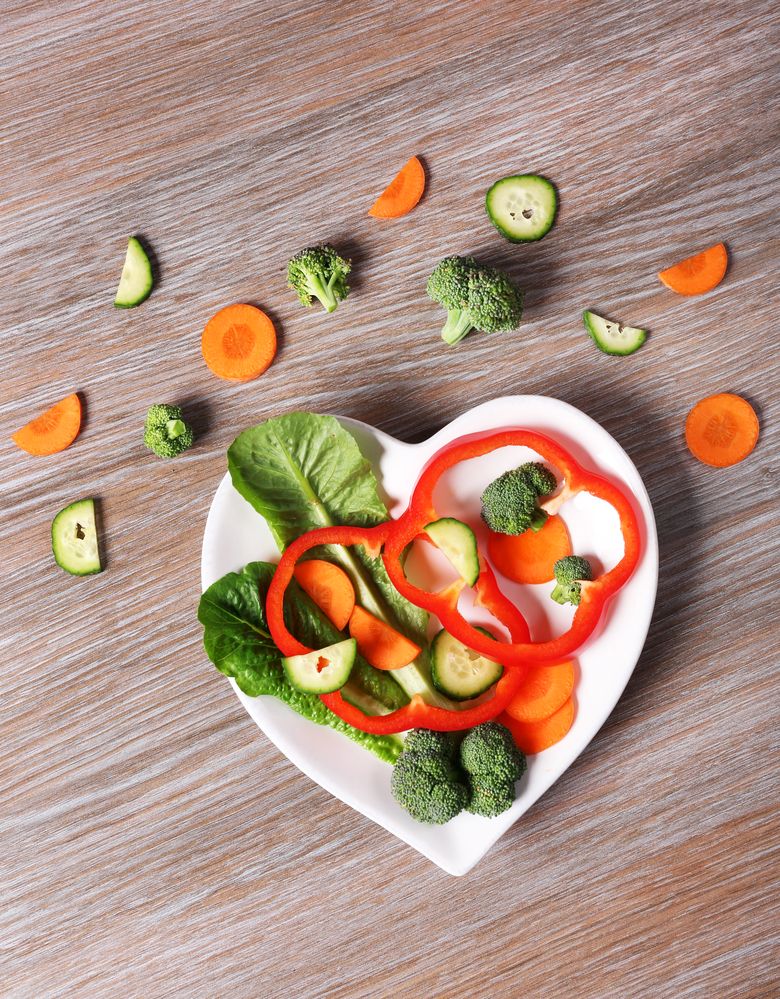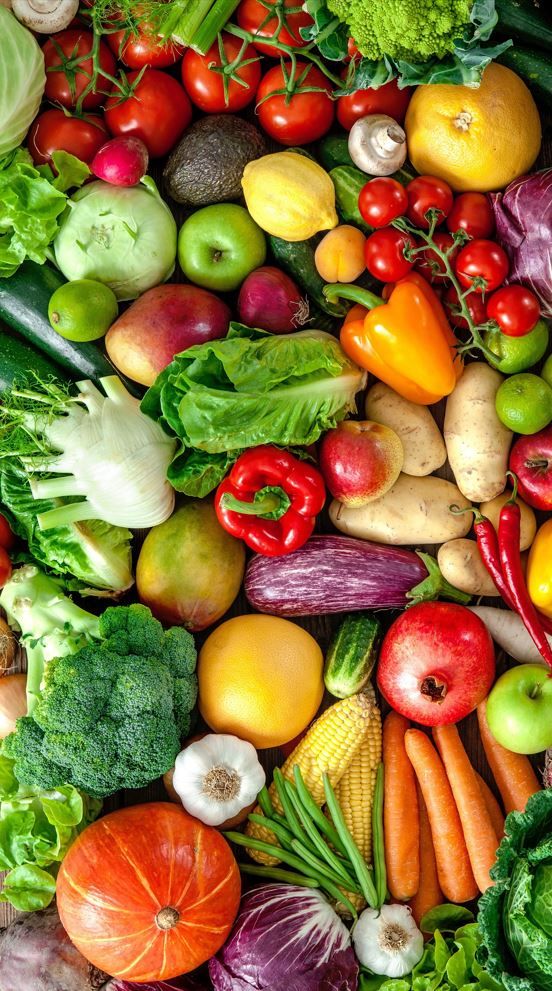Super foods, the ultimate health foods – the benefits of basil, rosemary, oregano and other green herbs
Written by Catherine Saxelby
on Thursday, 26 February 2009.
Tagged: anti-aging, antioxidants, balanced diet, cooking for one, eating out, food variety, healthy recipes, nutrients, salt, superfoods, vitamins

While the market for herbal remedies such as echinacea, gingko and herbal teas is growing exponentially, let's not forget that the culinary herbs that grace our meals can make a sizeable contribution to our nutrition intake - if we eat enough of them. Think of fresh herbs as green leafy vegetables and you'll soon realise that they are in the same class as spinach and Asian greens.
Packed with vitamins and minerals
Like other fresh herbs, basil is a rich source of a number of minerals - potassium, magnesium and smaller amounts of iron and calcium - as well as vitamin C, folate, vitamins B1 and K. It also scores high for fibre and a great many antioxidants.
How the green herbs stack up against fruit and veggies
On a weight for weight comparison, basil and parsley have almost twice as much vitamin C as oranges. While dill has six times more beta-carotene than rockmelon or pumpkin.
However, we only consume at most one or two grams of any herb while we happily tuck into 120 grams of an orange. So it's easy to see why herbs have been deemed ‘insignificant' in the vitamin stakes.
Tabbouli and pesto - packed full of goodness
We can up our intake of green herbs - and the vitamins and antioxidants they contain - by eating tabbouli regularly. With a couple of bunches of parsley in every bowl along with cracked wheat, garlic and tomato, this is a delicious way to prove how herbs can really boost your nutrient intake. Ditto for pesto sauce - lots of basil (or you can use Italian parsley or coriander) blended with toasted pine nuts, olive oil and garlic. Maximum herb, maximum flavour, maximum vitamins, maximum nutrition!
Herbs and antioxidants
Recent research hails herbs and spices as the latest nutritional heroes. Packed with antioxidants - substances that protect our bodies from free-radical damage - and other nutritional goodies, they help protect against heart disease and possibly cancer, aid digestion, boost immunity and reduce the risk of bacteria in food.
While all herbs contribute valuable antioxidants to our diet, those that pack the most powerful punch are oregano (all types), sage, rosemary, thyme, marjoram and mint. Rosemary, thyme and oregano have been found to be rich in polyphenols (phenolics), a diverse group of antioxidants that may cut the risk of heart disease while mint, basil and parsley are high in mono-terpenes, which are thought to have cancer-delaying properties, especially with mammary (breast) tumours.
Anti-bacterial herbs
Parsley is also high in coumarins which are noted for their anti-coagulant and anti-bacterial properties, while extracts of rosemary are being tested to see if they can be used as a natural food-grade preservative.
Get a mood boost with mint
Mint is also a top rating herb for a group of antioxidants known as polyphenols. However it's better known for its menthol, a powerful compound that can give relief from indigestion and increase the flow of bile and other digestive juices. It's also a natural pick me up. It invigorates and refreshes you - which is why it's such a popular flavour in chewing gum and lozenges.
What herb goes with which food?
If you're trying to cut back on salt, use herbs freely to boost the flavour of your meals. Try the following:
- Basil - tomatoes, olive oil, pasta, egg, the base of pesto sauce, bocconcini
- Bay leaves - soup, casseroles, fish or chicken
- Chervil - eggs, salads, sauces, chicken, soft cheese
- Chives - fish, seafood, ricotta, cottage cheese, potato, cucumber, omelette, chicken
- Coriander - chicken, lean beef, mint, salads, avocado, soups, curries, noodle dishes
- Dill - fish, eggs, potato, mushrooms, prawns, scallops, smoked salmon, carrots, risotto
- Lemon grass - -used in teas, soups, curries and sauces
- Oregano - chicken, beef, fish, tomato, pizza, pasta, eggplant, zucchini
- Rosemary - potato, pumpkin, lamb, chicken, pork, rabbit, duck, garlic, scones and breads
- Tarragon - fish, turkey, liver, venison, salad dressing, lentils
Nutrition stats
Per serve:
Two sprigs of parsley (weighing 2g) supply: Trace of protein, trace of fat, trace of sugars, no starch, trace of dietary fibre, and negligible kilojoules (calories).
Per 100 g raw:
2 per cent protein, trace of fat, trace of sugars, no starch, 5 per cent dietary fibre, and 55 kilojoules (13 calories).
Easy ways to enjoy more herbs
- Add fresh basil or mint leaves to a salad to give it that special zing!
- Basil is a perfect partner for tomato, lamb, bocconcini, eggs, zucchini, fish and pizza.
- Slice up ripe tomatoes and arrange over crusty bread. Top with basil and ground black pepper. Healthy and tasty.
- Make fresh basil pesto with basil, olive oil and pine nuts
- Make a healthy potato salad by combining cold boiled potatoes with chopped basil, pine nuts and olive oil.
- Use plenty of oregano in your Greek and Italian cooking
- Coriander leaves (and often the roots as well) are a feature of Mexican and Asian cuisines. Use them to make great marinades, dressings and salsas.
Reviews
-
Read more
Product review: Low-sugar alcoholic ginger beer
1 March 2023 by, Catherine Saxelby
Want something to drink before dinner? Something that’s LOWER in alcohol than wine? To match his beer? Then look no further than Bundaberg’s low-sugar alcoholic ginger beer.
You can drink Bundaberg low-sugar ginger beer straight from the can, or pour it into a long glass over ice with a slice of lime.
-
Product snapshot: Berkelo’s Khorasan Macaroni
14 September 2022 by, Catherine Saxelby
I’m loving this macaroni from Berkelo. I was sent a sample for Whole Grain Week 2022 by the Grains Legume Nutrition Council. I cooked it up and found that it was just divine! Read on for more …
-
Product review: Super high-oleic safflower oil
11 May 2022 by, Catherine Saxelby
“What does super high-oleic mean?” I hear you ask. Also, “I haven’t heard of safflower for ages. What’s the deal?” Read on and all will be explained.
-
Product review: Healthy Life Food Tracker
6 April 2022 by, Catherine Saxelby
When I was first asked to write this review, I thought, Not another tracker.
After all, there have been several in recent years, such as My Fitness Pal and Everyday Diet Diary. But this one is different. It works by using your Everyday Rewards card AND your shop at Woolworths.
-
20 October 2021 by, Catherine Saxelby
With home delivery on the rise, this post is reviewing none other than that stalwart Lite n’ Easy. We all know their meals are good for weight loss (which we all need after COVID-19!), but did you know they’re also good for general health and wellbeing ? Eating well to nourish yourself – putting your mental health and wellbeing at the forefront – is gaining momentum. Lite n’ Easy meals also ensures you satisfy your need for vitamins, minerals, fibre and phyto-compounds, such as sterols and carotenoids.
 This post has been sponsored by Lite n' Easy.
This post has been sponsored by Lite n' Easy. -
Product review: Birds Eye Plant Based range
15 September 2021 by, Catherine Saxelby
When you think of Birds Eye, their frozen peas and fish fingers probably come to mind. But I bet you’d never think of plant-based products!
 This post has been sponsored by Birds Eye.
This post has been sponsored by Birds Eye. -
Product Snapshot: Olina’s Snackers Crackers
2 June 2021 by, Catherine Saxelby
We sampled Olina’s latest offering in the seeded cracker range – called Olina’s Bakehouse Seriously Seedy Snackers (which is a great name BTW). They come in four flavours: Barbecue, Chilli & Lime, Beetroot & Sour Cream, and Balsamic Vinegar & Caramelised Onion. Take a look at our verdict.
Healthy Weight Loss
-
Read more
Intermittent fasting vs daily calorie restriction
3 May 2023 by, Catherine Saxelby
As you probably know already, intermittent fasting (IF) has gained favour as an alternative regimen to daily caloric restriction (DCR). Fasting is shown to extend the lifespan of rats, and has been associated with metabolic benefits in humans, yet the results so far have been inconsistent. So, which regimen is best for healthy weight loss?
-
15 March 2023 by, Catherine Saxelby
What sort of a diet should you follow to lose that excess weight? These days, it’s pretty confusing with high-protein Keto advocates clashing with plant-protein followers … as well as intermittent fasters, juice-only dieters, no-carb dieters and no-animal (aka plant-based) dieters. Plus all the ads for anti-hunger supplements, meal-replacement shakes and home-delivered meals, more of which somehow appear every day. So, what sort of diet should YOU follow to lose that excess?
-
Protein shakes for weight loss
9 November 2022 by, Catherine Saxelby
These days, protein shakes aren’t bought by just body builders – they’re so popular that you can readily buy a 400 g tub at your local supermarket or service station. And with tempting claims such as ‘Facilitates muscle toning’, ‘Contains transformation-making protein’ and ‘Tastes incredible, mixes easily’, why wouldn’t you grab one? But protein shakes aren’t the magic answer to all your weight-loss woes. Let’s take a look at what you get for your money.
Guest post by dietitian Zoe Wilson APD
-
20 January 2021 by, Catherine Saxelby
Many of us have cravings from time to time and for different reasons. One thing is certain, they can sabotage all your best efforts at a healthy diet and/or weight loss. The good news? You CAN beat them. I’ll tell you how.
-
How to lose weight WITHOUT going on a diet
14 October 2020 by, Catherine Saxelby
The word 'diet' is a turn-off for most people. It sounds hard, unpleasant and unpalatable. Losing weight doesn’t have to be hard AND it doesn’t have mean sticking to a 'diet'. You can forget Paleo, Keto, Vegan and Raw, Gluten-free and Intermittent Fasting. To lose weight, you don’t have to follow any specific diet. What you need is simple, healthy, nutritious food and a few tips and tricks.
-
What IS a healthy balanced diet for weight loss?
16 September 2020 by, Catherine Saxelby
Healthy weight loss happens when you lose weight slowly and steadily (around 1 kg or 2 pounds weight loss a week). Your goal is to lose weight while still getting your essential nutrients but from smaller portions. You certainly don’t want to be tired with no energy! That’s why you need regular healthy meals and snacks on hand to ensure your vitamins, minerals, omega-3s and fibre needs can be easily met. There is a new range of healthy weight loss meals available and it’s one that I’d like to recommend. With these ready meals, you’ll say goodbye to meal planning, shopping, meal preparation and cooking.
This post is sponsored by Chefgood
-
Kitchen make-over for the New Year
8 January 2020 by, Catherine Saxelby
“This year, I'm going to lose weight!”, or “This year I’m opting for a healthier lifestyle!” Is your 2020 New Year's resolution something like one of these? If so, how is it going to happen?
Most popular
-
Read more
Q. What's the difference between Diet Coke and Coke Zero?
12 September 2013 by, Catherine Saxelby
A. At first glance, Diet Coke and Coke Zero appear to be identical. Both contain no kilojoules (Calories) and no sugar. Both are artificially sweetened with (the same amount) of aspartame and acesulfame K and therefore have the same ‘sweetness’.
-
How to convert sodium to salt (and salt to sodium)
6 August 2010 by, Catherine Saxelby
As a nutritionist, my aim is to help busy women eat healthily. One of the ways to do this is to follow the general nutrition advice to reduce the salt in your diet. So, how can you do this when what you’ll see on a food label and on any recommended daily intakes is sodium?
-
7 types of sugar - which is healthier?
11 December 2013 by, Catherine Saxelby
Last week on the radio, the announcer asked me if there was a 'good' sugar – one that would satisfy her sweet tooth but that was 'healthier' than regular white sugar. She figured if there were 'good' carbs and 'bad' carbs there must be some sugars that would get the nod of approval from nutritionists.
-
Eat to beat gastro and diarrhoea
12 October 2012 by, Catherine Saxelby
A clear fluid diet is the best form of treatment for gastro and tummy upsets. It is the "lightest" type of diet, designed to place as little strain as possible on the digestive tract. It is NOT nutritionally adequate and should be followed only for a strictly limited time e.g. two or three days but no more than a week.
-
Nutella. The full (correct) list of ingredients
12 April 2011 by, Catherine Saxelby
Have you ever tried to find the exact list of ingredients for Nutella online? The identical one that appears on its label - in descending order from the first (largest ingredient by weight) to the last ingredient, as required by law? Well, you won’t find it! Here’s the hoop-la I went through to discover exactly what the ingredients in Nutella are and why Nutella is not good for your kids.
-
Sugar - why quitting sugar guarantees you'll lose weight
6 May 2013 by, Catherine Saxelby
Sugar. It's been labelled "deadly", "addictive", "toxic", "sweet poison" and blamed for the rise in global obesity in recent years." Get rid of the white toxin from your diet and you'll free up your body to drop those excess kilos" (or so say anti-sugar campaigners Sarah Wilson, David Gillespie and Robert Lustig). Here are the three real reasons why I believe quitting sugar helps you lose weight.
-
What does 8,700 kilojoules look like?
14 August 2012 by, Catherine Saxelby
8,700 is a magic number in nutrition. It’s the number of kilojoules (kJ) that is the “average” intake for adults in Australia, if the surveys are correct.
It’s widely used as a benchmark figure and as the basis of food labels such as the Percent Daily Intake values.
Recently kilojoules have appeared on fast food menu boards and they use 8,700 as the yardstick to assess their foods against. Here's my take on it.
Recipes
-
Read more
24 May 2023 by, Catherine Saxelby
This is a kind of pavlova topped with fruit, but the base is made from ricotta, rather than egg whites and sugar.
-
22 March 2023 by, Catherine Saxelby
This is an Asian-influenced salad that’s perfect to serve as a side salad at a BBQ or with a fillet of fish.
-
14 December 2022 by, Guest Post
This banana loaf is half bread and half cake. Hence I've called it "cread" which is halfway! It’s dense and delicious without being super-sweet or oily. It can be enjoyed fresh, toasted or sliced and frozen into portions to enjoy later.
-
23 November 2022 by, Guest Post
This quick and easy dessert is ready in minutes. And there are NO leftovers to tempt you later!
-
19 October 2022 by, Catherine Saxelby
A quick and easily-made sandwich, it’s great for an easy lunch.
-
Spring Vegetable Pesto Pasta Salad
7 September 2022 by, Guest post
This super salad-in-one gives you pasta plus vegetables all together. It has a spring feel to it.
-
Squash-ed spaghetti bolognaise
3 August 2022 by, Guest post
This is an excellent make-and-freeze recipe, so weeknight meals become more manageable. I know of no better way of ‘hiding’ veggies than in a Bol sauce – somehow mince with a few veggies like pumpkin or zucchini is a match-made-in-heaven.
Foodwatch
The Good Stuff
The Boring Stuff
© 2025 Foodwatch Australia. All rights reserved
Website by Joomstore eCommerce
